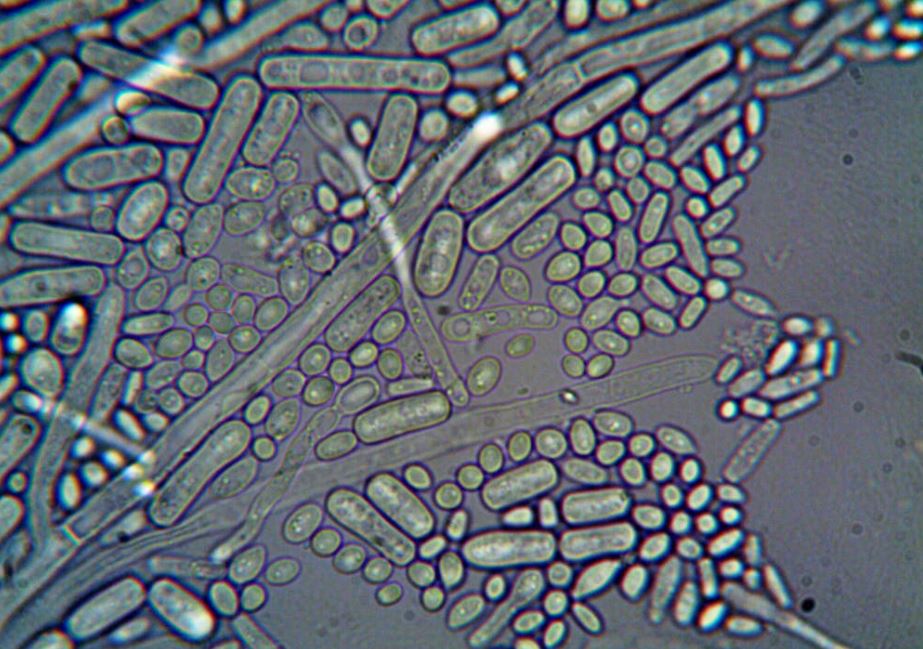Bacteria can make our buildings healthier. This is according to practitioners of microbial architecture, an emerging area of the bioeconomy at the intersection of architecture and microbiology.
Microbial architecture, otherwise known as probiotic design, finds ways of incorporating living communities of microbes (known as microbiomes) into our building and interior designs. Depending on the species that make up a microbiome and the ratios they are present in, these invisible assemblages can perform various biochemical activities that can benefit our health.
This is still an early field and there have been few applications outside small experimental setups. However, with increasing interest in the power of microbiomes across diverse fields like health, epidemiology, and environmental planning, we could soon see startups selling microbial communities that people can cultivate in their homes for specific health outcomes.
The importance of microbiomes
Microbiomes are found across every environment on earth. Although tiny, they are abundant enough to drive planetary-scale phenomena like the nutrient cycles that push phosphorus and nitrogen through the earth system. Inside our bodies, they perform vital functions that keep us alive.
All of us are familiar with probiotic yoghurts that deliver live, beneficial bacteria to our gut. The bacteria in probiotic foods are selected to support diverse communities of microbes in our digestive tracts. Here, these tiny biochemical machines create compounds like vitamins, antioxidants, and enzymes that our bodies would not be able to make themselves. Scientists are realising how much our internal microbiomes affect our health by preventing inflammation, regulating our metabolism, and even influencing our moods.
Microbial architecture runs on a similar concept. Here, the idea is to seed buildings and surfaces with carefully selected microbial species that can co-exist in stable communities. Using synthetic biology, their genetic material could even be tweaked to serve specific functions.
Bacteria as building and design technologies
Scientists already know that the kinds of microbes in our immediate environment can influence the ones that inhabit our bodies. Probiotic design could also support our health by actively encouraging certain microbes that confer specific health benefits to multiply in our living spaces.
By colonising the floors, ceilings, and surfaces of our homes, health-supporting microbiomes could displace populations of infectious microorganisms that might cause disease. Architectural microbiomes can be thought of as ambient health supplements that transfer into our bodies even as we go about our daily routines. Custom microbiomes could also filter and metabolise pollutants, reducing the health risks of indoor air in polluted cities.
Microbial architecture offers an unusual pathway to more sustainable design, limiting the need for chemical cleaners and fossil polymer-coated surfaces that have kept modern hospitals, homes, and public transportation networks clean. This is because these creatures are extremely efficient chemical producers, requiring few inputs and drawing energy just from their immediate surroundings.
Microbiomes for safer hospitals
The Niches for Organic Territories in Bio-Augmented Design (NOTBAD) at University College London is one centre of research into microbial architecture. Their focus lies in the important application domain of combating antimicrobial resistance.
Antimicrobial resistance is one of the most serious global health issues we face today. Our dependency on antibiotics and antibacterial chemicals have triggered an evolutionary arms race where certain strains of harmful bacteria quickly become impervious to our strongest drugs and chemicals. According to a 2014 pronouncement from the WHO, continued use of antibiotics and bacterial cleansers could bring about a future where minor injuries could easily lead to death.
Antimicrobial resistance is a particular problem in hospitals, ideal incubators of super-strains thanks to frequent antibiotic and antibacterial chemical use and easy transmission between patients.
Usually, hospitals try to combat infectious outbreaks by sterilising instruments and surfaces with powerful chemicals that kill all bacteria present. This approach is counterproductive because it wipes out benign and beneficial species as well harmful ones. By eliminating resource competition, sterilisation makes it likelier that stronger and more harmful bacterial strains can come to dominate the ecosystem.
NOTBAD is investigating how mixed communities of beneficial bacteria could be released into hospitals specifically to balance against more harmful strains. Cultivating stable communities of diverse, beneficial bacteria on the walls and surfaces of our hospitals offers a more permanent way to ensure healthier environments for patients by letting biology do our work for us.
Richard Beckett, probiotic pioneer
Hospitals are not the only places where microbiomes could make our lives better. Richard Beckett is a probiotic designer based at UCL working on how we could achieve healthy homes using bacteria. He wants to find practical ways to envelop our buildings with what he calls ‘an invisible microbial fabric”, a living layer that maintains our health and wellbeing.
In 2020, Beckett won an award from the Royal Institute of British Architects’ award for research into developing living building materials that could be easily embedded with beneficial bacteria. For his winning experiment, he built probiotic tile surfaces from ceramic and concrete, testing their effects on the overall microbial diversity of the buildings they are placed inside. His work showed that living bacterial communities can prevent the growth of harmful pathogens by encouraging robust, diverse communities of healthy ones.
Beckett argues that the field of probiotic design is compatible with the broader bio-based turn in design and architecture happening today. The search for sustainable materials in architecture is fostering openness in the industry towards novel organic materials, which are generally better at supporting beneficial bacterial growth than the building materials we tend to work with today like steel.
For him, the major problem of probiotic architecture is ensuring stable populations of select microbes can survive indoors for long periods of time. Much of his prize-winning research has focused on discovering strains adapted to dry environments. One species he has investigated is the bacillus subtilis, a beneficial bacteria often found in soils or animal guts.
Yet even the most resilient bacterial species need the right substrate materials that can support them for periods. Substrate materials can become a crucial part of the microbiome technology, allowing the microbiome to remain dormant and conserve energy until certain environmental changes – like the entry of mould or air pollution – triggers them to begin metabolising and multiplying. The anchoring materials must be conducive to rapid bacterial growth but it must also be cost-effective and easily accessible for scaling in ordinary buildings.
Beckett found that the best probiotic building materials were ceramic-based hybrid materials, which maximised bacterial survival. Using this, he produced a range of building tiles with various surface morphologies and textures, testing to see which versions attracted and cultivated the most diverse mix of beneficial microbes. His objective was to develop building materials that offered the most attractive environments for health-supporting microbes.
Understanding the microbial world
As well as understanding what materials can support vibrant populations of healthy microbes, commercialising indoor microbiomes will need microbial testing services that can analyse the microbial communities present in a building. CoreBiome, a University of Minnesota spinoff , is an example of a startup offering sampling and analysis for the microbiomes that inhabit any environment, from agricultural cropland to human bodies.
Surveys of indoor microbiomes can guide designers on what kinds of species mixtures may enhance an environment. Using the genomic information that companies like CoreBiomes can provide, future startups could one-day assess the microbial deficiencies of an indoor space and create tailored microbiomes to improve its health profile. Once a building gets seeded with a particular microbiome, these sampling services could give insights into how well the functional species are surviving and multiplying.
Before we can directly manipulate the probiotic properties of our buildings, however, much more research has to be done in pinpointing what kinds of species and microbiomes have what effects on human health.
Scientists know there is a strong link between the diversity of beneficial microorganisms in our bodies and positive health outcomes. Yet the precise effects of interactions between the microbiomes in our bodies and in our environment is still poorly understood.
Researchers also need to understand more about which species in which combination would provide what functions. Probiotic architecture brings building designers into the conversation to ask what kinds of building materials and spaces are needed to support long-term survival of microbial mixes that have particular effects on bodily health.
Luckily, microbiome research is a flourishing field. mBodyMap, a curated database that lists microbe species and their associations with human health and disease, is the kind of initiative that could spur investigation into which microorganisms might prove useful in architectural design.








